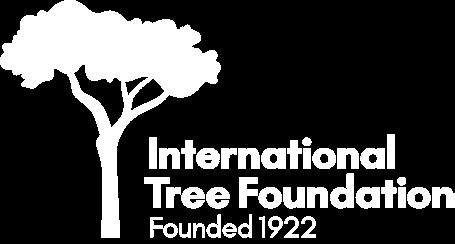The power of trees Impact report 2022









This has been a year in which there has been increasing concern about the climate crisis. Tree planting and reforestation is widely seen as a crucial part of the solution. We want to ensure that this is done in the right way, working closely with communities to unlock the multiple benefits of tree planting and restoration. This annual report demonstrates our commitment to realising that – bringing technical expertise, local knowledge and sheer determination to the task of transforming landscapes and lives.
All the successes over this year have come from the team, communities and partners we work with and it is their visions and impact that we want to highlight in this impact report. Furthermore, the achievements described here are also down to our supporters and funders. Your trust in us is humbling and we don’t take it lightly. We are working hard to make every penny count and to consistently deliver quality projects and enduring impact.
In the last year we have seen an expansion of our work across the UK and Ireland and Africa. Our partners have managed to deal with hail storms,

drought and natural disasters. And yet thanks to their drive and energy they have carried out remarkable work which is re-greening landscapes, creating employment, restoring biodiversity and changing lives. Over 800,000 trees were planted during the year but our impact can’t just be counted in trees – it is the multiple benefits that we strive to create – contributing to 12 of the 17 UN Sustainable Development Goals. This year I have seen first-hand the difference that this work makes on the ground – for communities and in terms of wider ecological benefits. As Stephen, our Chair states, “we’ve got so much more to do for the year ahead and we look forward to achieving that together.”

We’re so thankful to you for making this possible.

This year, we have changed how we count our trees. Previously, we’ve counted the number or trees planted and growing in a calendar year. But tree planting season does not follow calendar years.
So, in order to better reflect the environment we’re working in, we are now measuring all our impaact based on the tree planting year, 1 October – 30 September.
In order to adapt to this new reporting period, this 2022 report covers January 2022 to September 2022. I hope you’ll agree that we accomplished a lot in just nine months!

834,219
wonderful trees planted and growing


391 crucial hectares of forest conserved or restored
12 projects increased vital biodiversity or ecosystem services

52,276 people reached through awareness campaigns
44,253 young people learned about our environment and conservation

12,517 remarkable people participated in our projects over the year
87 community organisations increased forestry and agroforestry capacity





4,469 participants increased household income through our projects

2,116 hardworking smallholder farmers increased their yield
33%
of leadership roles in our partner organisations held by women


1,581 brilliant teachers and youth workers trained
3,786 staff and generous volunteers received training
2022 was a resurgent year for ITF’s work in Africa. As Africa Programme Manager, I am so inspired by the projects we support and the people we work with. It is humbling to work on projects that tackle the challenges of the current climate and ecological crises as well as supporting communities to build sustainable livelihoods and resilience against climate change.
Through the Sustainable Community Forestry Programme and Watu wa Miti in Kenya, we were able to implement and embed a multi-impact approach across our projects, contributing to 10 out of 17 of the UN Sustainable Development Goals.
In 2022, we mobilised 34 community tree planting partners across 11 countries to implement transformational forest and landscape restoration activities across the continent.

Together we planted more than three quarters of a million trees – with thanks to our generous supporters, partners and funders like One Tree Planted and Ecologi.

And as always, we’ve had a strong focus on planting 22 trees species that are threatened with extinction to protect the future of our forests.
In 2023, we envisage a significant growth of our work and the delivery of transformational community-led projects. We will also continue learning from our experiences on the ground and from the communities we work with for improved understanding and impact. I am particularly excited about the expansion of our work into new geographical landscapes and the adoption of innovative monitoring protocols.
We are extremely grateful to our supporters and most of all our tree planting partners for being part of our growing community of environmental stewards.

We’ve been planting trees in Uganda with local community partners Karambi Group of People with Disabilities (KaGPWD).
Together we are teaching and promoting tree planting and permaculture to local schools and people living with disabilities. And we’re transforming unproductive land into food forests.
“This project has helped us to plant trees that in the future will help reduce climate change. For people with disabilities, it is a very good project. If you plant a tree in your compound all it needs is water. Trees are a source of food at the household level and as well as in getting an income. We would love to see more people with disabilities getting engaged in other income generating activities.” Godfrey Bwambale, Programmes Director at KaGPWD.
Beyond providing an abundance of fresh fruits and vegetables, food forests can enrich local biodiversity and lead to improved community health and wellbeing.


2022 saw the conclusion of our Sustainable Community Forestry programme, a multi-year partnership with Prince of Wales’s Charitable Fund. Thanks to their support, we’ve planted 500,000 trees since 2019.
As part of this programme of work, we’ve been working with Landscape Conservation Mentors (LCMO) on their Greening Mpimbwe Campaign project in Katavi, Western Tanzania.

Mzee Shija Sele, is a prominent beekeeper in Mwamampuli Village area where he has over 300 beehives. When LCMO asked him to take part in the project, he gladly set aside part of his land for tree planting. Through LCMO we have been supporting him and 33 local farmers with training, advice and support on tree planting on farmland. Mzee Sele has established a fruit farm on his land and is growing various trees, including fruit trees like mangoes, oranges, papayas.
“I love learning new ways of land use and through consistent exposure to different potential investments, I have been able to increase the value of my land. This currently serves as a model to my community. People are coming to learn from me and I enjoy sharing such knowledge with fellow farmers. I just enjoy seeing beehives, fruit trees and green gardens in the same place, this is the way to go toward achieving sustainability,” said Mzee Shija Sele.
I am responsible for ITF’s Geographical Information Systems (GIS) and Remote Sensing technologies in Africa. Basically, I ensure that the highest monitoring standards and protocols are met across all our projects.
Day to day, I am usually out in the field helping communities make the necessary preparations for upcoming tree planting activities. This involves inspecting and aligning boundaries, determining tree spacing and the number of trees to be planted in specific projects.

I also provide technical guidance to ITF partners and community volunteers and (remotely) spearhead project monitoring for all trees planted across our projects using ITF’s mobile app and a database. And I provide data analysis and interactive maps to showcase our work.
When working with communities, we use a participatory model whereby we train them how to monitor trees they have planted. This move has helped them change their perception about projects we do with them and they are now owning the process.
A successful project requires good monitoring. We expect a minimum of 85% survival rate of trees. Data means we can take early action to avoid situations whereby things go out of control. If we measure a lower survival rate we are able to recommend a solution early enough.
ITF now has a Tree Survival and Sustainability Fund (think of an insurance policy) where in case of prolonged dry seasons or outbreaks of wildfires, it can be used to take measures that increase tree survival rate or facilitate replanting.
It makes me happy to see the local communities we’re working with embracing ITF’s initiative on their farms and adjacent forests. Forests are now forming canopies and water streams are coming back. People are not travelling such long distances as they used to go for watering their animals or for domestic use.
What’s more, I’m deeply moved that people are willing to better understand and adopt GIS and Remote Sensing technologies and that I am able to access all the data they record and upload into our database platform to share with the communities as well as current and prospective partners and supporters.

2022 has been a year of great strides, new landscapes, new projects and great new community partnerships have been added to the ITF family. Despite Kenya experiencing prolonged drought in various parts of the country, we managed to plant and nurture more than 600,000 trees across the country. Working in close collaboration with our local communities and strategic partners, we were able to do timely planting through the expert advice on weather patterns from the Kenya Meteorological Department.

More than 6,500 households across Kenya have been positively impacted by the project with about 1,500 reporting improved incomes.
At the heart of our restoration work is community livelihood improvement. There is a direct connection between poverty and forest degradation. ITF community-led restoration projects ensure that the community takes the lead in preserving their degraded landscapes, from scratch. Seed collection, nursery establishment, planting and even after care is done directly by the community, therefore owning the process as well as benefiting directly from
the project. This has had a great impact in the success of the projects. This applies to both reforestation and agroforestry projects.

Most or close to all agroforestry projects are implemented by women. Integrating gender as a bare minimum in all our projects and the success of it makes me very happy. With the women we have peer monitoring, evaluation and learning. Implementing communities compete on success of their on-farm trees, which are mainly high value trees that provide nutrition and fuel wood. Seeing and experiencing the positive change that our projects have on the local women makes me very gratified.
We have been enhancing the monitoring and evaluation of projects through the introduction of GIS and training our partners on how take geo-tagged photos from their phones. We have applied radical listening to our projects which has been a great addition to our success. We have had sessions to listen to the communities on what they believe will make the projects sustainable and enhance the trees’ survival and protection.
New exciting projects are introducing energy-saving cookstoves to the restoration projects. This has been requested by the women living adjacent to the forests. The eco-stoves will reduce the amount of fuel wood used thus reducing the pressure on the forests, reducing labour and freeing the women’s time to engage in other gainful activities.


In Kitui County, Kenya, we’re working in partnership with Kitui Development Centre, a women-led organisation, to plant trees that replenish and revive this semi-arid landscape, thanks to support from One Tree Planted.
By planting indigenous and fruit-bearing trees, we’re employing agroforestry, a technique that integrates trees into farmland, to improve soil health and increase yields. And the results have been outstanding – with 26,650 trees planted and over 23 hectares restored, this project is literally taking root.
But it doesn’t stop there. We’re supporting the local community to create tree nurseries that bring about lasting positive change. So far, we’ve already established three community nurseries and supported 94 community members with training in seed sourcing, propagation and grafting.
Local farmers like Lillian are already seeing the results of this project on a personal level. “I have benefited from all the tree planting trainings and now am able to start my own nursery. Since we started this project, I have been able to earn more than 70,000 Kenyan shillings from the sale of the tree seedlings. This has assisted me in paying my children’s school fees and meeting other domestic needs. I have also planted about 300 tree seedlings and soon I will be harvesting and eating fruits, after a while I will be able to get firewood.”
This project shows that it’s possible to make a lasting impact, one tree at a time.

In Kenya, there are 1,100 native tree species, of which 10% are threatened with extinction. We are working with Botanic Gardens Conservation International (BGCI), local communities and many other partners to ensure that none of Kenya’s tree species become extinct.
During 2022, we ran training with school children to teach students about the importance of planting threatened trees and helped them put their new knowledge into practice by planting trees together in the school grounds.

We also ran expeditions into the forest with community partners to find endangered trees and collect the vital seeds. These have then been cultivated and grown in local community nurseries. Soon the seedlings will be planted on homesteads and in the forests.
Through training on threatened species and planting and propagation, we’re securing the future of Kenya’s native trees while increasing tree cover and restoring forests.
2022 was a very good year for ITF’s work in the UK. These 12 months saw a huge expansion of our presence around the country, supporting projects from Skye to Kent to Cornwall. Of particular note was the expansion of our work in all four home nations of the UK.
Supporting communities in their tree-growing ambitions is the centrepiece of ITF’s work worldwide, and I am very happy to report that this mission is being warmly received in all corners of the UK.

Along with our programme expansion, the ITF UK team has also grown, with the arrival of Lucy Staveley in August 2022. This investment looks ahead to further expanding our work without losing our attention to detail and offer of bespoke advice to our planting partners. This extra capacity also provides space to develop adjacent progammes for the year ahead, for example community tree nurseries, woodlands and wellbeing, and refugee support.
One outstanding milestone has been the development of our relationship with the tree planting platform, Ecologi, who have chosen us as a trusted partner for their work in the UK. This process saw us design and create a tree monitoring mobile app that would allow us to collect data on each tree planted and pass it on to their customers. We trialed this on the Isle of Skye in August and were very happy with the results! With Ecologi’s help, we are now looking to again increase our work in the UK and beyond.


Nature is essential for boosting both our mental and physical wellbeing. Our partners United Response planted 5,000 trees in Boscawen Farm, Truro, Cornwall to help connect people to nature.

United Response staff, volunteers and members of the local community came together to plant trees and create a green space where people can relax, unwind and engage with nature.
With time and care, these trees will grow into mature woodland. And the footpaths will ensure both the people United Response supports and the wider community enjoy watching the trees as they flourish.
By planting native trees and shrubs, such as blackthorn and hawthorn, this community-led project is contributing to global efforts to restore, protect and conserve local landscapes. But planting 5,000 trees is only just the beginning of a long-term goal of fostering environmental stewardship within the community.
United Response aims to establish a forestry school where the people they support can gain skills and hands-on experience in planting, protecting and managing newly established woodland.


2022 marked 100 years of our work planting, protecting and promoting trees around the world. To celebrate such a remarkable anniversary, we gathered with local partners, tree lovers, supporters and friends in both the UK and Kenya.
Not only were we able to celebrate the history, impact and our current work, it was also an opportunity to recognise and appreciate the grassroot partners who have been instrumental in the work of ITF.
“Our centenary celebrations in Kenya were a reminiscent moment of the preciousness of trees, the value of community-led forestry and a reflection on our founder’s pioneering vision, legacy and impact. A word of gratitude for all the partners who received ITF Green Championships and Commendation Awards for 2022,” said Wycliffe Matika, ITF’s Africa Programme Manager.


Trees are nature’s superheroes - they clean the air, cool our cities, provide habitats for wildlife and help protect us against natural disasters. And they provide vital resources like food, medicine and firewood for thousands of communities worldwide.
Here at ITF, we know that when tree planting is done properly it transforms landscapes and lives, which is why we work in partnership with communities to plant trees, restore forests and create enduring impact for people and planet.
As little as £3 can plant a life-giving tree. Join us in harnessing the incredible power of trees to create lasting change. Donate today at internationaltreefoundation.org/donate.


(+44) 01865 922 430 internationaltreefoundation.org
hello@internationaltreefoundation.org

The Old Music Hall, Cowley Road, Oxford, OX4 1JE, United Kingdom
Charity number 1106269